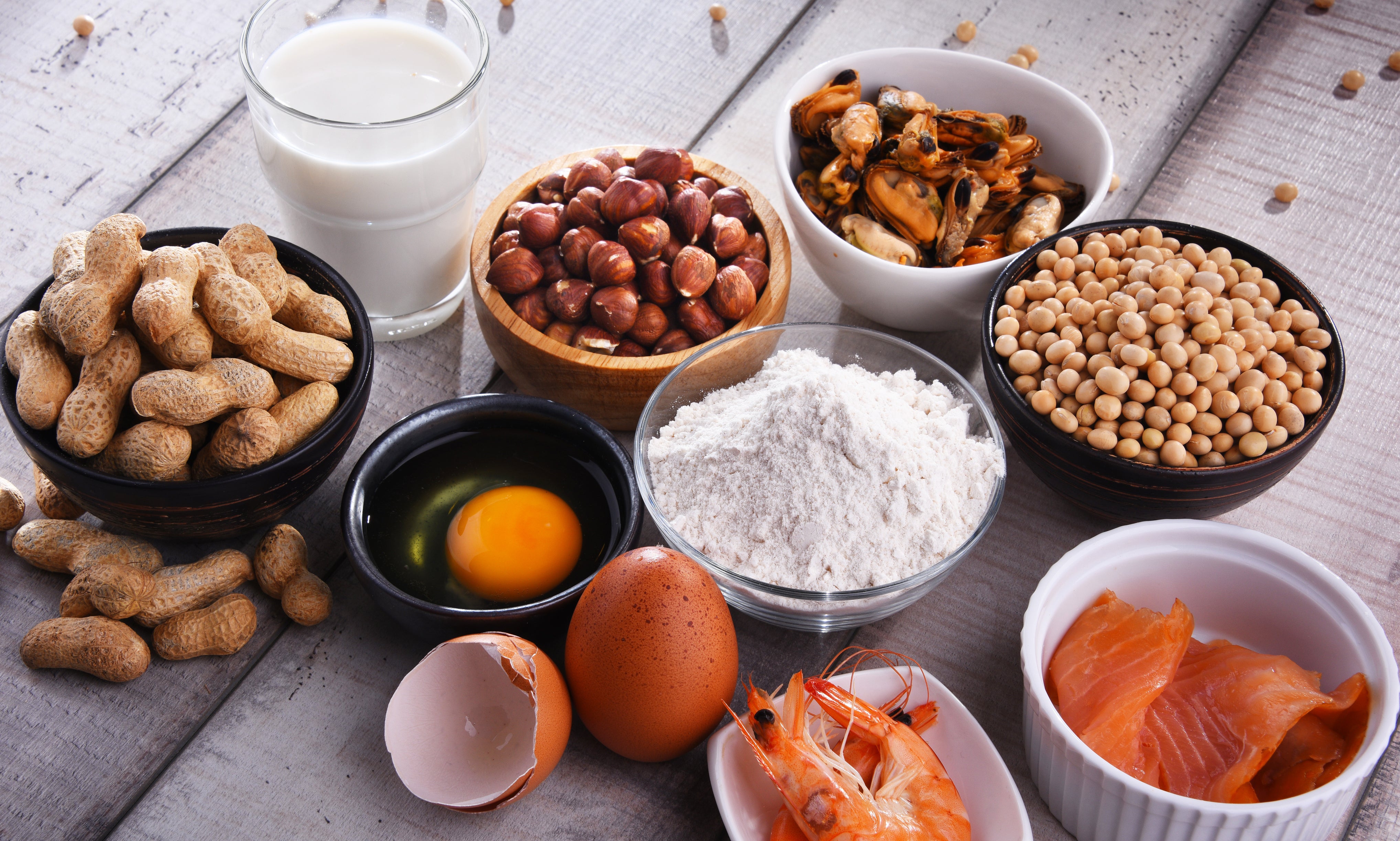The Independent's journalism is supported by our readers. When you purchase through links on our site, we may earn commission.
Things you may not know about food allergies
After her grandson found out he was allergic to hazelnuts, Jane E Brody discovered that there is a strong link between food allergies and pollen, writes

Your support helps us to tell the story
From reproductive rights to climate change to Big Tech, The Independent is on the ground when the story is developing. Whether it's investigating the financials of Elon Musk's pro-Trump PAC or producing our latest documentary, 'The A Word', which shines a light on the American women fighting for reproductive rights, we know how important it is to parse out the facts from the messaging.
At such a critical moment in US history, we need reporters on the ground. Your donation allows us to keep sending journalists to speak to both sides of the story.
The Independent is trusted by Americans across the entire political spectrum. And unlike many other quality news outlets, we choose not to lock Americans out of our reporting and analysis with paywalls. We believe quality journalism should be available to everyone, paid for by those who can afford it.
Your support makes all the difference.My grandson Tomas first noticed a distressing reaction to hazelnuts at age 8. Whenever he ate Nutella, his mouth and throat felt tingly and swollen, and so this sweet spread was then banned from his diet and the household.
A few years later, Tomas had the same reaction when he ate raw carrots. In researching this column, I learned that hazelnuts and carrots, although botanically unrelated foods, share a protein with birch pollen, to which Tomas is allergic. However, he can eat cooked carrots safely because cooking denatures the allergenic protein.
Now 21, he has not yet reacted to other foods that also contain the birch pollen protein, namely celery, potato, apple and peach, although he could eventually become sensitive to one or more of them. His father said that as an adult he has developed similar mouth and throat symptoms when he eats apples and peaches, especially during pollen season.
I also learned of another common link between pollen and food sensitivities. People allergic to ragweed may also react to bananas and melons. Again, a shared protein is responsible. This type of allergy is believed to start with sensitisation to inhalation of the offending pollen that later results in an allergic reaction when the food protein is consumed.
Fortunately, pollen-food allergy syndromes, although not pleasant, are nearly always mild and not life-threatening.
The only real food allergies are adverse immunological responses. The body reacts to an otherwise innocent food as if it were a life-threatening infection
Unfortunately, a growing number of people can experience severe, potentially fatal reactions to certain foods, most of which are omnipresent in the American diet. The main culprits, the so-called “Big 9” – milk, eggs, peanuts, tree nuts, fish, crustacean shellfish, wheat, soy and sesame (which was recently added to the list) – account for about 90 per cent of food allergy reactions.
Although commercially packaged foods must now label the actual or possible presence of major allergenic foods that can cause fatal reactions, other food allergens are not required to be listed. And sesame, which affects more than 1 million children and adults in the United States, is not required to be listed on foods until 2023.
Changing eating habits are adding to the problem. Today’s growing dependence on foods prepared outside the home by restaurants, shops and factories makes avoiding food allergens more challenging. People with potentially fatal anaphylactic reactions can’t be too careful, even when they have no reason to suspect the presence of a life-threatening allergen. Years ago a college student who knew she was deathly allergic to peanuts died after eating chilli that had been thickened with peanut butter.
A family I know with a child who is severely allergic to peanuts, tree nuts, sesame seeds and their oils, dines only in Italian restaurants that are least likely to use these ingredients. Still, the venue is always told about the boy’s allergies, and he carries an EpiPen that can be used to avert a fatal reaction in case a slip-up occurs.
In the United States, the prevalence of serious food allergies ranges from 10 per cent in 2-year-olds and 7.1 per cent in children 14 to 17 to 10.8 per cent in adults 18 and older. Although allergies to milk, eggs, wheat and soy in infants and young children are frequently outgrown, others in the Big 9 are nearly always lifelong. And people who were allergy-free as youngsters do not necessarily remain so. New food allergies can develop at any age.

According to Dr Scott H Sicherer, allergist at the Icahn School of Medicine at Mount Sinai in New York: “Remarkably, approximately half of US food-allergic adults report developing at least one of their food allergies during adulthood, with shellfish allergy responsible for the largest number of such cases.”
The only real food allergies are adverse immunological responses, Sicherer explains. The body reacts to an otherwise innocent food as if it were a life-threatening infection and launches a full-scale offensive. Symptoms may include hives, trouble breathing, vomiting or anaphylaxis – a severe, potentially fatal shock reaction that occurs within seconds or minutes of exposure to an allergen, sometimes in only tiny amounts. That is why most airlines no longer offer peanuts to flyers – a mere sprinkling of peanut dust can prove fatal to some people with peanut allergies.
More than 40 per cent of food-allergic children and half of food-allergic adults experience at least one severe reaction in the course of their lives. Among those allergic to one or more of the Big 9 allergens, severe reaction rates exceed 27 per cent, with peanut allergy leading the list at 59.2 per cent among children and 67.8 per cent among adults who are allergic to peanuts.
Still, many people who think they have a food allergy actually don’t when they’re tested with a blind oral challenge, in which foods are tested under medical supervision to see if a child reacts, the gold standard for diagnosing food allergies. Others incorrectly consider all kinds of adverse reactions to foods – from stomach upset to headache – to be allergies. Food intolerance, for example to lactose, the natural sugar in milk, is not an immune reaction but rather results from deficiency of the enzyme lactase. Many Asian people develop redness and flushing when they consume alcohol because they lack an enzyme to digest it. Other people may think they’re allergic because they experience drug-like reactions, like extreme jitteriness from the caffeine in coffee and tea.

Sometimes, long-term avoidance of a food can result in an allergic reaction when that food is eventually consumed. This can happen to children with skin allergies who avoid milk; they may later experience an allergic reaction when they finally consume it. Occupational exposures, the use of skin care products, even tick bites can sometimes result in adult-onset food allergies if there is cross-reactivity to an allergenic substance in both.
And while in years past allergy-prone families were advised to avoid exposing their children to peanuts until age 3 (advice that is likely to have contributed to the current explosion of peanut allergies in children), it now appears that early introduction – at six months – of a highly allergenic food is actually protective, diminishing the risk of a later-in-life reaction, Sicherer says.
Further confusing the food-allergy picture is the fact that under different conditions people may respond differently to the same food. Thus, for some, an allergic reaction may occur only when the food is consumed in large amounts or in conjunction with alcohol or intense exercise, which allergists call “augmentation factors”.
Recent desensitisation studies, which aim to reduce sensitivity to allergic foods by gradually exposing people to minute amounts of allergens over several months, and others underway may make life less terrifying for many people with severe food allergies. Meanwhile, avoiding offending foods offers the best protection against a severe allergic response.
This article originally appeared in The New York Times.
Join our commenting forum
Join thought-provoking conversations, follow other Independent readers and see their replies
Comments